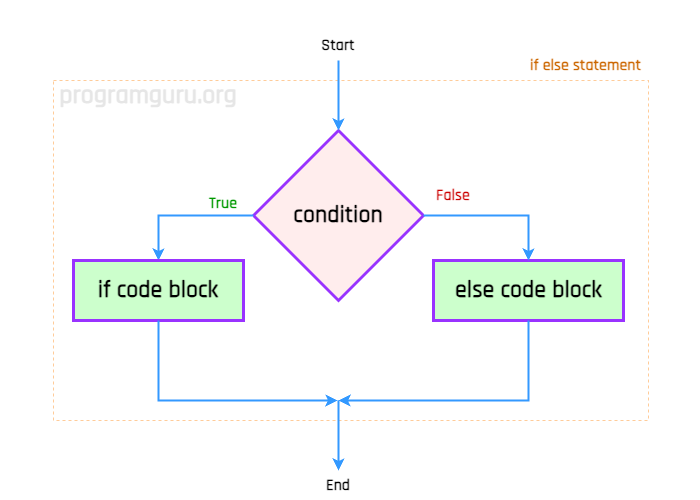If-Else Statement in R
In this tutorial, we will learn about if-else statements in R. We will cover the basics of conditional execution using if-else statements.
What is an If-Else statement
An if-else statement is a conditional statement that executes one block of code if a specified condition is true, and another block of code if the condition is false.
Syntax
The syntax for the if-else statement in R is:
if (condition) {
# Code block to execute if condition is true
} else {
# Code block to execute if condition is false
}The if-else statement evaluates the specified condition. If the condition is true, the code block inside the if statement is executed; otherwise, the code block inside the else statement is executed.

Example 1: Checking if a Number is Even or Odd
In R, checking if a number is even or odd within an if-else statement involves using the modulo operator (%) to determine if the remainder when dividing by 2 is zero. If it's zero, the number is even; otherwise, it's odd.
For example,
- Declare a variable
num. - Assign a value to
num. - Use an if-else statement to check if
numis even or odd. - Print a message indicating whether
numis even or odd.
R Program
num <- 10
if (num %% 2 == 0) {
print(paste(num, 'is even.'))
} else {
print(paste(num, 'is odd.'))
}Output
10 is even.
Example 2: Checking if a String Starts with a Specific Value
In R, checking if a string starts with a specific value can be achieved using the `startsWith()` function from the `stringr` package or regular expressions with functions like `grepl()` within an if statement.
For example,
- Declare a variable
str. - Assign a value to
str. - Use an if-else statement to check if
strstarts with a specific value. - Print a message indicating the result of the check.
R Program
str <- 'Hello, world!'
if (grepl('^Hello', str)) {
print('String starts with 'Hello'.')
} else {
print('String does not start with 'Hello'.')
}Output
String starts with 'Hello'.
Example 3: Checking if a Number is Positive or Negative
In R, checking if a number is positive or negative within an if-else statement involves evaluating the number's sign using conditions like greater than zero (>0) for positive numbers, less than zero (<0) for negative numbers, and equal to zero (==0) for zero.
For example,
- Declare a variable
num. - Assign a value to
num. - Use an if-else statement to check if
numis positive or negative. - Print a message indicating whether
numis positive or negative.
R Program
num <- -5
if (num > 0) {
print(paste(num, 'is positive.'))
} else {
print(paste(num, 'is negative or zero.'))
}Output
-5 is negative or zero.